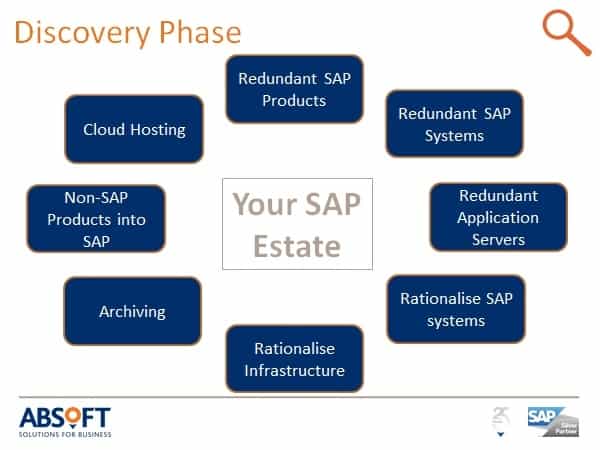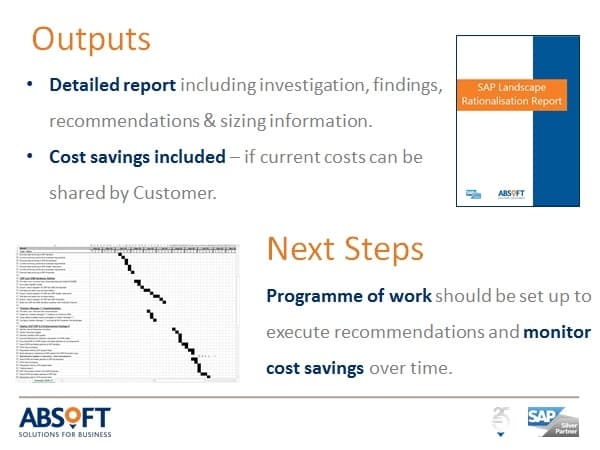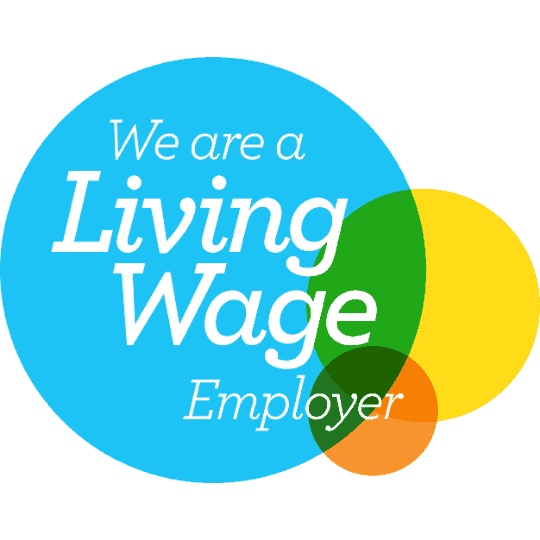Recently at Absoft we have been helping our public sector customers address aggressive cost saving requirements. Part of how we’ve achieved cost savings is through our landscape rationalisation service that addresses the size and complexity of an SAP landscape to reduce costs directly whilst making a stable and adaptable solution for the future.
We have found a common scenario in public sector organisations where a systems integrator has implemented a large and complex SAP solution historically, and incumbent support providers have taken a static approach to maintenance. Often the solutions are so complex and interdependent that changes are near impossible and just keeping the lights on is an enormous portion of the IT budget.
The first benefit of landscape rationalisation is an immediate, direct, cost saving. A future benefit has the potential to eclipse this over time as a simplified landscape with less products, less hardware and less complexity is far more adaptable. As requirements continue to change and the public sector rises to meet the challenges ahead, applications that can be changed as required are vital.
What is Landscape Rationalisation?
Landscape Rationalisation starts with an audit. The precise areas covered are driven by what the customer needs and their pain points, but we usually look to understand the SAP applications in use, their technical architecture and configuration, the interfaces, and how the landscape is supported.

With all the information we need in the audit, our consultants can produce recommendations. Our recommendations are designed to move towards a landscape that fits the current business requirements, reduces direct costs immediately, and also provides a platform that can easily be changed and adapted in the future.
“Everything should be made as simple as possible, but not simpler.” -Albert Einstein
Simplification is the key tenet of the whole process. We are used to our consistent team supporting the solutions that we build, and we build systems that are supportable by a lean team in the UK. This experience allows us to rationalise existing landscapes into a model of efficiency and simplicity. We have no incentive to recommend complex or large solutions to create work for a huge systems integrator organisation, as may have happened during an organisation’s initial SAP implementation.
Typical recommendations we make are:
• Reduction in hardware sizing, or reduction in the number of hosts.
• Moving functionality into core ERP and decommissioning entire SAP applications.
• Removing or streamlining interfaces.
• Removal of single points of failure, unnecessary technical components, and unexpected dependencies.
It is also common for us to include an element of technical roadmap in the landscape rationalisation. Usually organisations have some current requirements for new functionality, a new hardware platform, upgrades for software maintenance that we can combine into the requirements of the landscape rationalisation to make sure we are moving towards a goal that meets all the organisation’s future needs as well as delivering immediate simplification.
Working closely with the customer, we agree which recommendations are going forward and will help to plan a programme of work to deliver the required changes. Of course, the planning is one of the most complex stages as we need to ensure a valid compatible order of work and one that fits other ongoing changes

Signs that you may need Landscape Rationalisation
Some of the problems we’ve addressed through landscape rationalisation are listed below. If you recognise any of these in your organisation, a review of your landscape is likely to be useful.
• An excessive hardware footprint for SAP
• A large number of server hosts for SAP
• A lot of different applications, some for only a single business process
• Time consuming or unsuccessful troubleshooting, particularly for interfaces, and particularly between support teams or providers
• Unexpected dependencies and an inability to change anything without regression
Example in a county council
We’ve recently undertaken a landscape rationalisation exercise for a county council after taking over their SAP support from one of the large outsourcing organisations. Their landscape consists of around six SAP products. All production systems had multiple SAP application servers.
Interfaces were a major challenge. Typically faults would take several weeks to resolve even if the issue was very straightforward as there was no single owner and multiple support teams involved. Initially we documented and understood all interfaces end-to-end, and ensured a single support team could own the entire process. Resolution time of interface issues dropped from weeks to hours immediately without even making any technical changes.
We identified significant opportunities for removal of unnecessary application servers and technical components with no loss of functionality or performance. The result was a reduction in hosts from 38 to 16, and countless reduction in dependencies and single points of failures. There was an immediate cost saving in support costs, but also VMWare licenses, Windows licences and backups.
We proposed a replacement of some applications and functionality. SRM was replaced by the built-in procurement functionality in ERP. In the future, some interfacing software will be reduced with lower cost options and a SAP standard solution for document storage is currently being implemented to reduce third party costs and decommission further systems.















